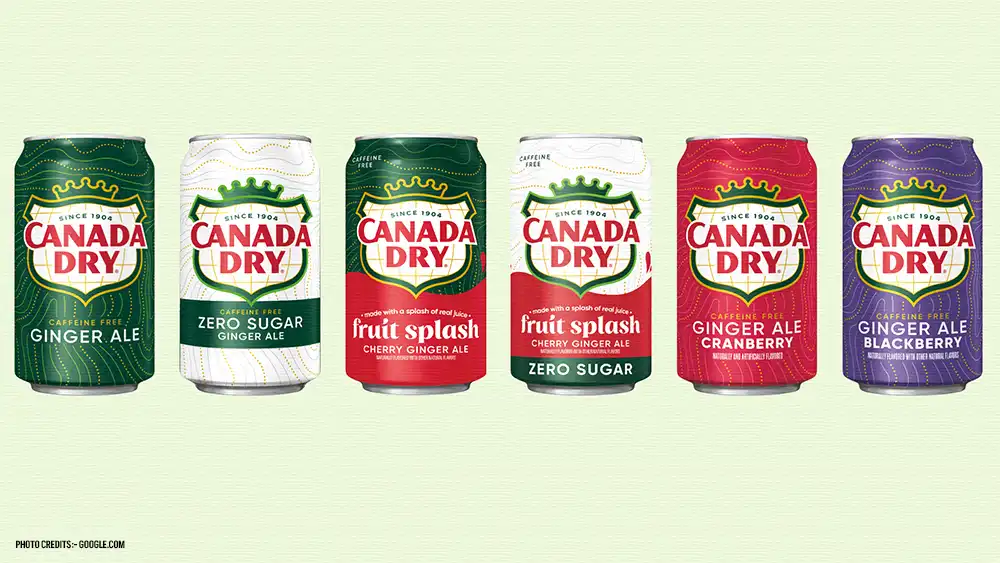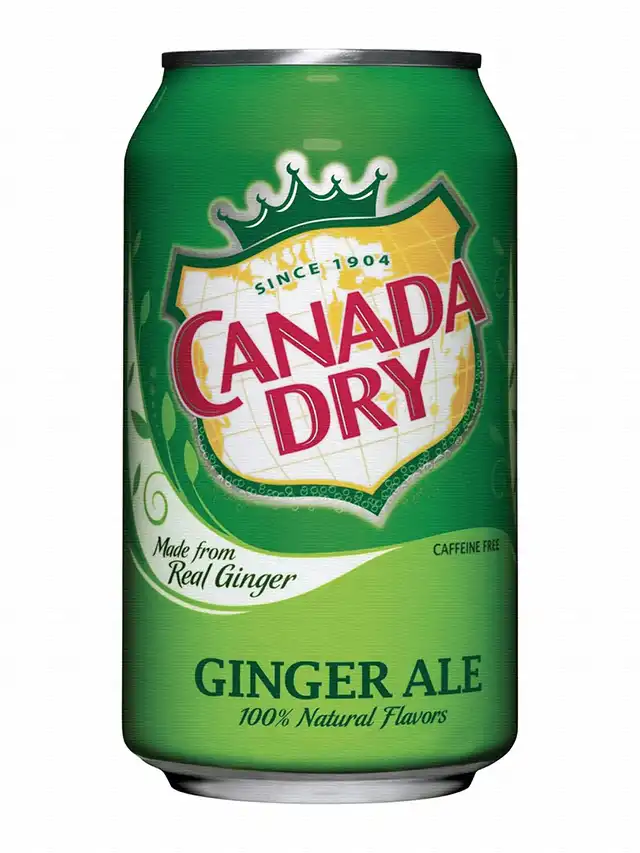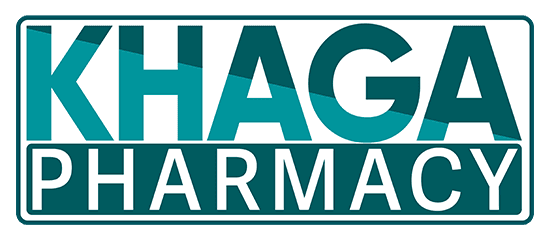
HEALTH BLOG
Does Canada Dry Have Alcohol? A Detailed Exploration in 2024
-
Rahul Priydarss
Discover the answer to “Does Canada Dry Have Alcohol?” in this comprehensive exploration of the iconic beverage. Learn about its history, ingredients, and popular products. Uncover the health benefits, cultural impact, and sustainability efforts of Canada Dry. Find out why this non-alcoholic drink remains a favorite for mixing and solo enjoyment.
Introduction of Canada Dry:
When you think of Canada Dry, the iconic green can with gold accents often comes to mind, evoking thoughts of refreshment and a distinctive ginger flavor. Many people enjoy Canada Dry ginger ale as a versatile beverage, perfect for mixing in cocktails or enjoying on its own. However, a common question arises: “Does Canada Dry have alcohol?” This question stems from the brand’s history, its frequent use in mixed drinks, and perhaps a bit of confusion surrounding its name. This comprehensive blog post aims to clarify whether Canada Dry contains alcohol and delve into the brand’s fascinating history, product line, and cultural impact.
What is Canada Dry Drink:
Canada Dry is a brand of soft drinks, primarily known for its ginger ale. It was originally created in 1904 by pharmacist John J. McLaughlin in Toronto, Canada. The brand has since expanded to include a variety of flavors and types of beverages, including diet versions, fruit-flavored ginger ales, club soda, tonic water, and sparkling seltzer waters.

Table of Contents
What is Alcohol:
Alcohol, in its simplest form, refers to a group of organic compounds characterized by the presence of a hydroxyl group (-OH) attached to a carbon atom. The most commonly known and consumed type of alcohol is ethanol (ethyl alcohol), which is also the type found in alcoholic beverages. Ethanol is produced through the fermentation of sugars by yeast, resulting in the conversion of sugars into ethanol and carbon dioxide.
Alcohol as ethanol is widely used in beverages such as beer, wine, and spirits, where it serves as the primary psychoactive ingredient. It affects the central nervous system, leading to effects that range from relaxation and lowered inhibitions to impaired coordination and, in excessive amounts, potentially severe intoxication.
Beyond beverages, alcohols are a diverse group of chemical compounds used in various industrial and household applications. They can act as solvents, disinfectants, and fuel sources due to their ability to dissolve a wide range of substances and their flammability.
The Origins of Canada Dry:
Early Beginnings: In 1904, pharmacist and chemist John J. McLaughlin embarked on a quest to create a unique beverage in Toronto, Canada. Experimenting with various flavors and carbonation levels, McLaughlin aimed to develop a tonic water that offered a refreshing taste distinct from the sweeter, darker ginger ales prevalent at the time.
Perfecting the Recipe: McLaughlin’s breakthrough came when he crafted a pale, dry ginger ale with a distinct flavor profile. The term “dry” in the name referred to its less sweet taste, akin to dry wines and champagnes, which set it apart in the early 20th-century beverage market.
Introduction of Canada Dry Pale Ginger Ale: By 1907, McLaughlin had refined his ginger ale recipe to the point where he decided to market it as “Canada Dry Pale Ginger Ale.” This beverage quickly gained popularity in Canada and later internationally, celebrated for its crisp taste and high-quality ingredients.
Prohibition Era Influence: During the Prohibition era in the United States (1920-1933), Canada Dry Ginger Ale experienced a surge in demand. With alcohol prohibited, Canada Dry became a preferred mixer for bootlegged spirits. Its dry flavor profile helped mask the often harsh taste of illegal alcohol, cementing its reputation as a sophisticated mixer.
Expansion and Growth: Throughout the 20th century, Canada Dry expanded its product line beyond ginger ale. The brand diversified into various flavors and types of beverages, including club soda, tonic water, and sparkling drinks, adapting to evolving consumer preferences and tastes.
Cultural Impact: Canada Dry’s longstanding history and commitment to quality have left a significant cultural impact. It transcends being just a beverage, appearing in movies, television shows, and advertisements, and becoming part of holiday traditions and social gatherings worldwide.
Global Recognition: Today, Canada Dry is renowned globally as a premium brand synonymous with exceptional taste and quality. Its legacy as an innovator in the beverage industry continues to shape the market, making it a household name across generations.
Does Canada Dry Have Alcohol?:
No, Canada Dry ginger ale does not contain alcohol. It is classified as a non-alcoholic beverage and is widely recognized for its crisp, ginger-flavored taste. The confusion around whether Canada Dry contains alcohol often stems from its historical use as a mixer in cocktails during the Prohibition era in the United States (1920-1933). At that time, Canada Dry ginger ale gained popularity as a mixer for bootlegged spirits, which were illegal but widely consumed. Its dry and less sweet flavor profile made it an ideal companion to mask the harsh taste of illicit alcohol, contributing to its association with alcoholic beverages.
Canada Dry’s primary ingredients typically include carbonated water, high fructose corn syrup (or sugar), citric acid, natural flavors, and preservatives. These ingredients are carefully formulated to maintain the beverage’s distinctive taste without adding alcohol. The term “dry” in Canada Dry’s name refers to its less sweet flavor profile, similar to dry wines and champagnes, rather than indicating the presence of alcohol.
For consumers concerned about alcohol content, especially those abstaining from alcohol or avoiding it due to health or religious reasons, Canada Dry remains a safe choice. It is suitable for all ages and occasions where a non-alcoholic beverage is preferred. Despite its historical association with cocktails and spirits, Canada Dry ginger ale today is firmly established as a non-alcoholic drink enjoyed for its refreshing qualities and versatile use in both casual and formal settings.
Impact of Excessive Use of Canada Dry Drinks:
Excessive consumption of Canada Dry drinks, particularly its ginger ale and other flavored variants, can have several potential impacts on health and well-being:
Sugar and Caloric Intake: Many Canada Dry products, especially the regular versions, contain significant amounts of sugar. Excessive consumption of sugary beverages like Canada Dry can contribute to increased calorie intake, potentially leading to weight gain and associated health issues such as obesity, diabetes, and cardiovascular diseases.
Dental Health: The high sugar content in Canada Dry drinks can also have negative effects on dental health. Frequent consumption may increase the risk of tooth decay and cavities, especially if proper oral hygiene practices are not followed.
Digestive Issues: Some individuals may experience digestive discomfort, bloating, or gas from carbonated beverages like Canada Dry. These symptoms can be exacerbated with excessive consumption, particularly if consumed rapidly or in large quantities.
Potential for Addiction: While Canada Dry itself does not contain alcohol, the habitual consumption of sugary drinks can lead to dependency behaviors. This can include cravings for the beverage and a reliance on its consumption to satisfy thirst or cravings, potentially displacing healthier beverage choices.
Nutritional Deficiencies: Consuming Canada Dry beverages in excess may lead to a displacement of more nutritious beverages such as water, milk, or natural fruit juices. This can result in inadequate intake of essential nutrients like vitamins and minerals necessary for overall health.
Impact on Hydration: Despite being a beverage, excessive consumption of Canada Dry drinks may not effectively hydrate the body compared to plain water. The diuretic effect of caffeine in some variants or the high sugar content can potentially contribute to dehydration if consumed excessively.
Overall Health Risks: While moderate consumption of Canada Dry as part of a balanced diet is generally considered safe for most individuals, excessive intake can pose risks to long-term health. These risks are primarily associated with its sugar content and potential effects on metabolic health, dental hygiene, and overall dietary balance.

A- The Canada Dry Product Line: Beyond Ginger Ale:
While Canada Dry is best known for its ginger ale, the brand has expanded its product line over the years to include various flavors and types of beverages. Here are some notable products within the Canada Dry portfolio.
1. Canada Dry Ginger Ale:
- The classic and most popular product.
- Known for its distinctive ginger flavor and refreshing taste.
- Made with the crisp, refreshing ginger taste you’ve always loved, Canada Dry Ginger Ale is an unparalleled classic.
- Serving Size: 12 fl. oz.
Ingredients: carbonated water, high fructose corn syrup and less than 2% of: ginger extract, natural flavors, citric acid, sodium benzoate (preservative), caramel color.
Note- Not a significant source of calories from fat, saturated fat, trans fat, cholesterol, dietary fiber, vitamin A, vitamin C, calcium and iron. *Percent Daily Values are based on a 2,000-calorie diet.
2. Canada Dry Ginger Ale Zero Sugar:
- Made with the crisp, refreshing ginger taste you’ve always loved, but with Zero Sugar.
- Serving Size: 12 fl. oz.
Ingredients: carbonated water and less than 2% of: ginger extract, natural flavors, citric acid, malic acid, sodium citrate, sodium benzoate (preservatives), calcium disodium edta (preserve flavor), aspartame, acesulfame potassium, caramel color.
Note- Not a significant source of calories from fat, saturated fat, trans fat, cholesterol, dietary fiber, vitamin A, vitamin C, calcium and iron. *Percent Daily Values are based on a 2,000-calorie diet.
3. Canada Dry Fruit Splash Cherry Ginger Ale:
- Sip into your comfort zone with Canada Dry Fruit Splash Cherry Ginger Ale, a refreshing ginger ale made with a splash of real juice.
- Serving Size: 12 fl. oz.
Ingredients: carbonated water, high fructose corn syrup and less than 2% of: ginger extract, cherry juice concentrate, natural flavors, citric acid, sodium benzoate and potassium sorbate (preservatives), red 40.
Note- Not a significant source of calories from fat, saturated fat, trans fat, cholesterol, dietary fiber, vitamin A, vitamin C, calcium and iron. *Percent Daily Values are based on a 2,000-calorie diet.
4. Canada Dry Fruit Splash Cherry Ginger Ale Zero Sugar:
- Sip into your comfort zone with Canada Dry Fruit Splash Cherry Ginger Ale, a refreshing ginger ale made with a splash of real juice.
- Serving Size: 12 fl. oz.
Ingredients: carbonated water and less than 2% of: ginger extract, cherry and lime juice concentrates*, natural flavors, citric acid, sodium citrate, sodium benzoate and potassium sorbate (preservatives), aspartame, acesulfame potassium, red 40.
Note- Not a significant source of calories from fat, saturated fat, trans fat, cholesterol, dietary fiber, vitamin A, vitamin C, calcium and iron. *Percent Daily Values are based on a 2,000-calorie diet.
5. Cranberry Ginger Ale:
- This the season for the real ginger taste of Canada Dry Cranberry Ginger Ale, made with a refreshing pop of crisp cranberry flavor.
- Serving Size: 12 fl. oz.
Ingredients: carbonated water, high fructose corn syrup and less than 2% of: ginger extract, natural and artificial flavors, citric acid, sodium benzoate (preservative), red 40, blue 1.
Note- Not a significant source of calories from fat, saturated fat, trans fat, cholesterol, dietary fiber, vitamin A, vitamin C, calcium and iron. *Percent Daily Values are based on a 2,000-calorie diet.
6. Blackberry Ginger Ale:
- A refreshing twist on a classic, Canada Dry Blackberry Ginger Ale pairs crisp ginger taste with tangy blackberry flavor.
- Serving Size: 12 fl. oz.
Ingredients: carbonated water, high fructose corn syrup and less than 2% of: ginger extract, natural flavors, citric acid, sodium benzoate (preservative), caramel color, red 40, blue 1.
Note- Not a significant source of calories from fat, saturated fat, trans fat, cholesterol, dietary fiber, vitamin A, vitamin C, calcium and iron. *Percent Daily Values are based on a 2,000-calorie diet.
B- The Canada Dry Product Line: Beyond Club Soda:
- Look no further for the perfect mixer. Canada Dry Club Soda adds a splash of crisp refreshment to all your favorite cocktails. Please drink responsibly.
- Serving Size: 8 fl. oz.
Ingredients: carbonated water, sodium bicarbonate, sodium citrate, potassium sulfate, disodium phosphate.
Note- Not a significant source of calories from fat, saturated fat, trans fat, cholesterol, dietary fiber, vitamin A, vitamin C, calcium and iron. *Percent Daily Values are based on a 2,000-calorie diet.
C- The Canada Dry Product Line: Beyond Tonic Water:
- For mind-blowing mixed drinks, reach for the crisp, cool refreshment of Canada Dry Tonic Water. Please drink responsibly.
- Serving Size: 8 fl. oz.
Ingredients: carbonated water, high fructose corn syrup, citric acid, sodium benzoate (preservative), quinine, natural flavors.
Note- Not a significant source of calories from fat, saturated fat, trans fat, cholesterol, dietary fiber, vitamin A, vitamin C, calcium and iron. *Percent Daily Values are based on a 2,000-calorie diet.
D- The Canada Dry Product Line: Beyond Sparkling Seltzer Water:
1- Original Sparkling Seltzer Water:
- Let the refreshment bubble over as you sit back and relax with the crisp taste of Canada Dry Original Sparkling Seltzer Water.
- Serving Size: 12 fl. oz.
Ingredients: carbonated water.
Note- Not a significant source of calories from fat, saturated fat, trans fat, cholesterol, dietary fiber, vitamin A, vitamin C, calcium and iron. *Percent Daily Values are based on 2,000 calorie diet.
2- Lemon Lime Sparkling Seltzer Water:
- Made with bold lemon-lime flavor, Canada Dry Lemon Lime Sparkling Seltzer Water brings crisp, cool refreshment with every sip.
- Serving Size: 12 fl. oz.
Ingredients: carbonated water, natural flavors.
Note- Not a significant source of calories from fat, saturated fat, trans fat, cholesterol, dietary fiber, vitamin A, vitamin C, calcium and iron. *Percent Daily Values are based on 2,000 calorie diet.
3- Mandarin Orange Sparkling Seltzer Water:
- Made with sweet mandarin orange flavor, crisp Canada Dry Mandarin Orange Sparkling Seltzer Water takes refreshment to undiscovered levels.
- Serving Size: 12 fl. oz.
Ingredients: carbonated water, natural flavors.
Note- Not a significant source of calories from fat, saturated fat, trans fat, cholesterol, dietary fiber, vitamin A, vitamin C, calcium and iron. *Percent Daily Values are based on 2,000 calorie diet.
4- Raspberry Sparkling Seltzer Water:
- See what your seltzer’s been missing. Canada Dry Raspberry Sparkling Seltzer Water is made with tangy raspberry flavor for ultimate refreshment.
- Serving Size: 12 fl. oz.
Ingredients: carbonated water, natural flavors.
Note- Not a significant source of calories from fat, saturated fat, trans fat, cholesterol, dietary fiber, vitamin A, vitamin C, calcium and iron. *Percent Daily Values are based on 2,000 calorie diet.
Health Considerations and Benefits with Canda Dry:
While Canada Dry ginger ale and its variations are enjoyable, it’s essential to consider their nutritional content, especially for those monitoring their sugar intake or other dietary concerns. Let’s look at some health aspects related to Canada Dry.
1. Sugar Content: Regular Canada Dry Ginger Ale is sweetened primarily with high fructose corn syrup (or sugar in some variations). A standard 12-ounce serving can contain a significant amount of sugar, contributing to its sweet taste. For example, a typical serving may contain around 35 grams of sugar, which is approximately 9 teaspoons.
Concerns: The high sugar content in regular ginger ale can be a concern for individuals managing conditions like diabetes or those watching their overall sugar intake to maintain a healthy diet.
2. Caloric Content: Due to its sugar content, regular Canada Dry Ginger Ale also has a moderate calorie count. A 12-ounce serving can provide around 140 calories or more, primarily from carbohydrates in the form of sugar.
Diet Options: Canada Dry offers diet versions of its ginger ale, such as Canada Dry Diet Ginger Ale. These diet varieties use artificial sweeteners like aspartame and acesulfame potassium instead of sugar. As a result, they provide a sugar-free alternative with minimal to no calories (typically less than 5 calories per serving).
Advantages: Diet ginger ale is suitable for individuals on calorie-restricted diets or those looking to reduce their sugar intake while still enjoying the refreshing taste of Canada Dry.
3. Ginger Benefits: Ginger, the key flavoring agent in Canada Dry ginger ale, offers potential health benefits.
Anti-inflammatory Properties: Ginger has natural anti-inflammatory properties that may help reduce inflammation in the body, benefiting conditions like arthritis.
Digestive Aid: Ginger is well-known for its ability to aid digestion by promoting the secretion of digestive enzymes and reducing gastrointestinal discomfort.
Nausea Relief: Ginger is often used to alleviate nausea, including motion sickness, morning sickness during pregnancy, and nausea induced by chemotherapy.
Gastrointestinal Health: Regular consumption of ginger may support overall gastrointestinal health, promoting better digestion and potentially reducing symptoms of indigestion and bloating.
Amount in Commercial Ginger Ale: It’s important to note that the amount of ginger in commercial ginger ale may vary and might not provide the same health benefits as consuming fresh ginger or ginger supplements, which typically contain higher concentrations of gingerol, the active compound responsible for many of ginger’s health benefits.
4. Hydration: As a carbonated beverage, Canada Dry can contribute to daily fluid intake, albeit less effectively than plain water. While hydrating, it’s essential to balance consumption with water intake to ensure adequate hydration, especially in hot climates or during physical activity.
The Cultural Impact of Canada Dry:
Canada Dry’s influence extends beyond its role as a beverage. Its presence in popular culture, historical significance, and contribution to various traditions highlight its cultural impact.
1. Pop Culture Presence: Canada Dry has been featured in numerous movies, television shows, and advertisements, reinforcing its status as an iconic brand. Its recognizable branding and packaging make it a frequent choice for product placements and endorsements.
2. Historical Significance: During Prohibition in the United States, Canada Dry’s popularity soared as people used it to mix with bootlegged alcohol, masking the often harsh flavors of illicit spirits. The brand’s long-standing history and consistent quality have helped it maintain a loyal customer base over the decades.
3. Holiday Traditions: Canada Dry Cranberry Ginger Ale has become a holiday favorite, often appearing in festive recipes and cocktails. Its limited availability adds to its appeal during the holiday season, making it a special treat for many.
FAQs about Does Canada Dry Have Alcohol?:
A1: No, Canada Dry ginger ale does not contain alcohol. It is a non-alcoholic beverage and part of the soft drink category.
A2: The term “dry” in Canada Dry refers to its less sweet flavor profile, similar to dry wines and champagne, distinguishing it from the sweeter ginger ales available at the time of its creation.
A3: The primary ingredients in Canada Dry ginger ale include carbonated water, high fructose corn syrup (or sugar), citric acid, natural flavors, and preservatives.
A4: Yes, Canada Dry ginger ale and other products are often used as mixers in cocktails. They are versatile and blend well with various alcoholic beverages.
A5: Yes, Canada Dry offers sugar-free options such as Canada Dry Ginger Ale Zero Sugar and other diet variations, which are sweetened with artificial sweeteners instead of sugar.

-Please remember, to always consult with healthcare professionals or Doctors for personalised advice related to medical conditions.
Conclusion:
In conclusion, the question “Does Canada Dry Have Alcohol?” is answered definitively: No, it does not. Canada Dry is a non-alcoholic beverage that has delighted consumers for over a century with its refreshing ginger ale and diverse product line. Its use in cocktails, historical significance, and cultural impact make it a beloved staple in many households. Whether enjoyed on its own or as a mixer, Canada Dry remains a popular choice for those seeking a flavorful, alcohol-free drink. With ongoing efforts in sustainability and ethical practices, Canada Dry continues to be a trusted and responsible brand.




